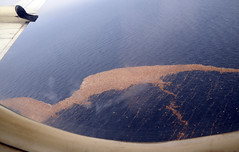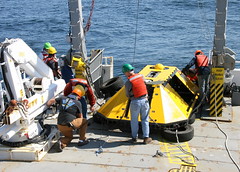Welcome Oregon Sea Grant’s Free-Choice Learning Lab to the blogosphere!
The lab, based at OSU’s Hatfield Marine Science Center in Newport, employs cutting-edge research tools and technologies to study informal science learning. The knowledge will be put in practice in the form of new and improved exhibits in the HMSC Visitor Center, which is managed by Sea Grant.
The blog, launched last week, will to record the work of graduate research assistant Harrison Baker and other graduate students as they design, build, test and refine the new exhibits.
Under the direction of Dr. Shawn Rowe, Sea Grant’s Free-Choice Learning program specializes in conducting and applying research on the learning that happens when people choose to visit science museums, zoos, and aquariums in their leisure time, making specific and conscious choices about what they learn. The program was recently awarded a $2.6 million, five-year, National Science Foundation (NSF) grant – the largest ever received by Sea Grant – toward the creation of the new lab, which will employ the Visitor Center’s exhibits as tools for studying how people learn in a free-choice environment.






